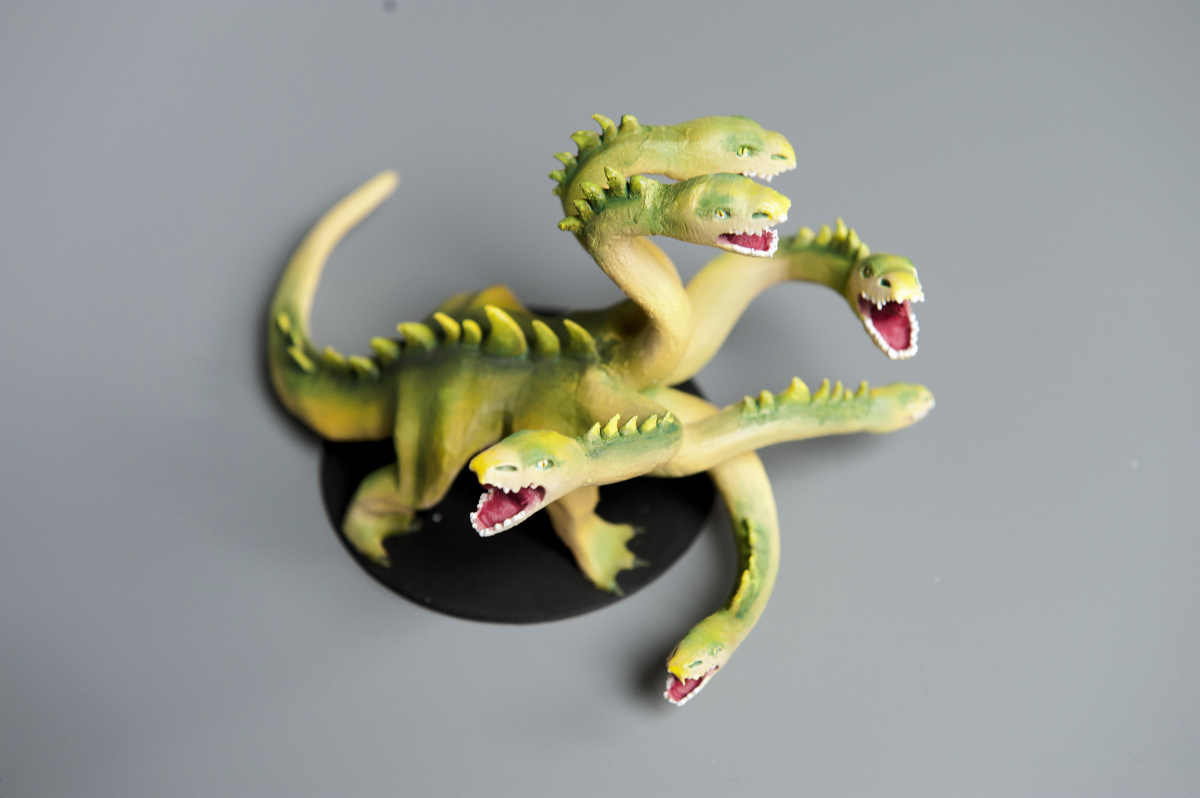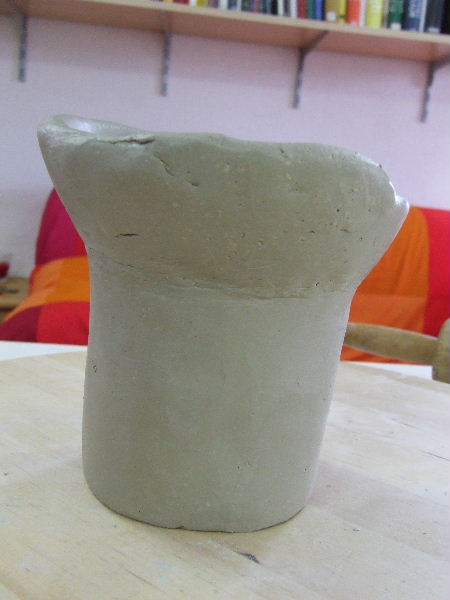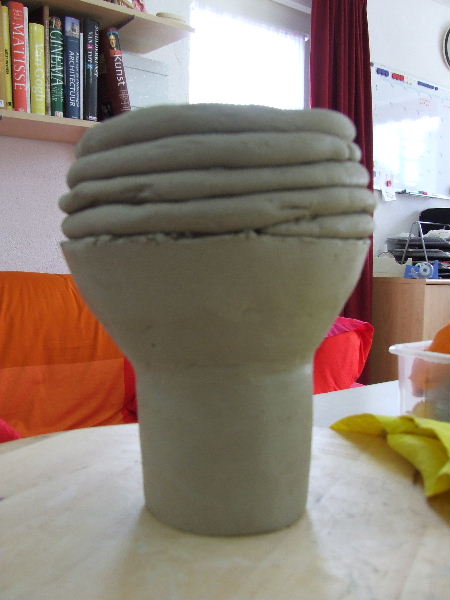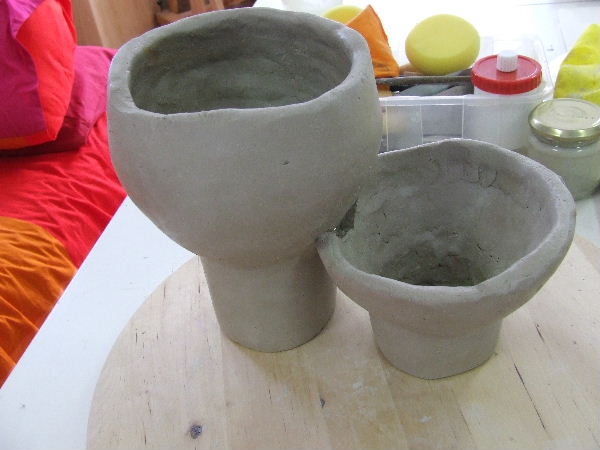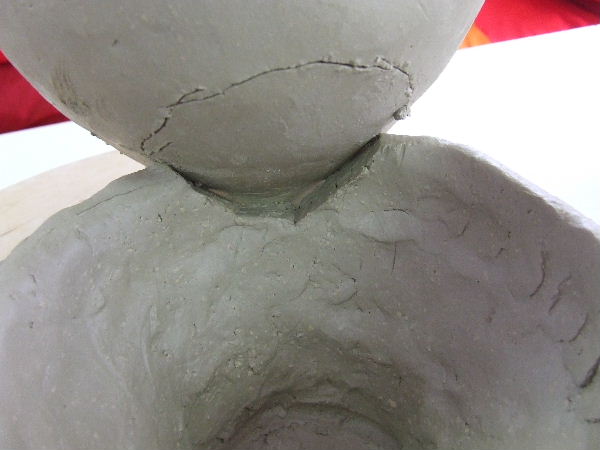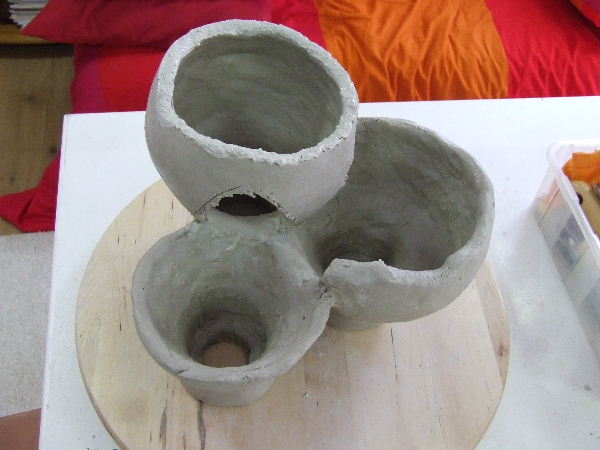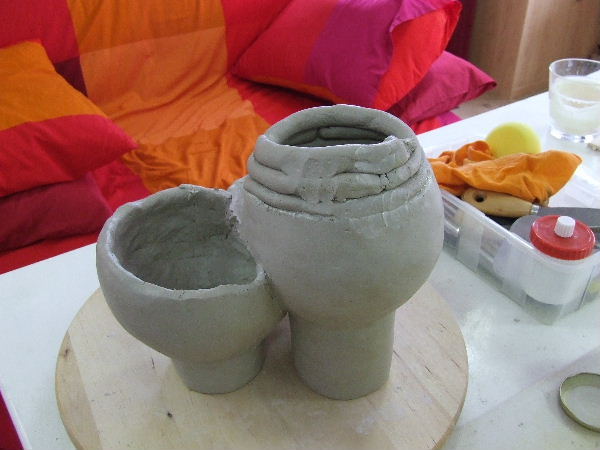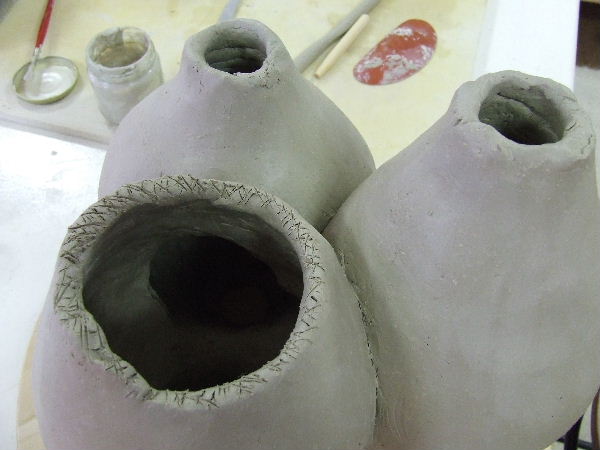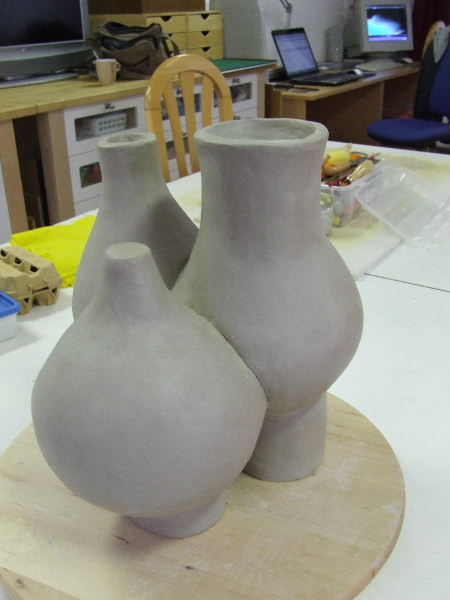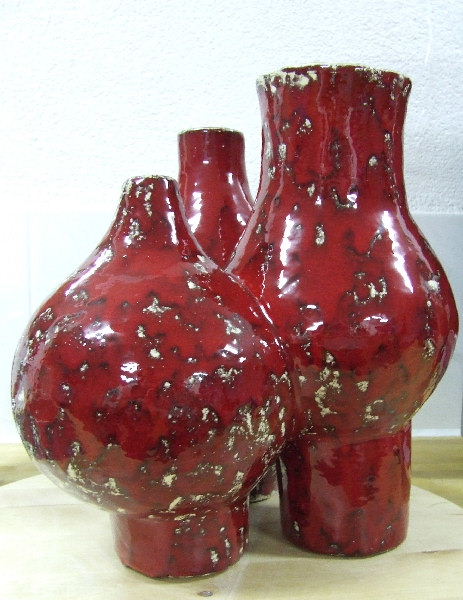| After building up a few more layers, I smooth the rolls again. Since I am creating a bulge, I need to constantly check the form. While forming the bulge, the top edge may become uneven in height. |
| I cut the top edge evenly again and continue building. The thickest part of the bulge is complete, and you can see that the top rolls are placed slightly further inward. I smooth these rolls again. |
| After finishing most of the first form, I start the second form. I want to interlock the forms, so I need to cut a section from the second form to fit. |
| A section must also be removed from the other form, as I want the inside of the form to be completely hollow. It’s a bit of a puzzle, and before joining the forms, I fit them several times until I am completely satisfied. |
| Similarly, I fit the third form into the structure. You can see how everything fits together well. |
| Once the three parts are joined, I continue building up the forms. Sometimes the rolls now span two parts, making the structure very sturdy. In the end, the three forms are separated again, and I finish them one by one. |
| The entire project takes quite some time. If I take a break, I need to score the first layer I attach to the piece again. Of course, I apply slip to the scores as well. You can see this here too. |
| The piece is now ready for the first firing, or bisque firing. If I have assembled everything neatly without air bubbles, the piece will remain intact in the kiln. It’s always a tense moment, as sometimes something breaks, and all your work is for nothing. |
| Fortunately, the piece has remained intact. It can now be glazed and fired again at a higher temperature so that the glaze adheres well. This is also a tense process, as something can still go wrong. But when the piece finally comes out of the kiln, I am very satisfied. |



